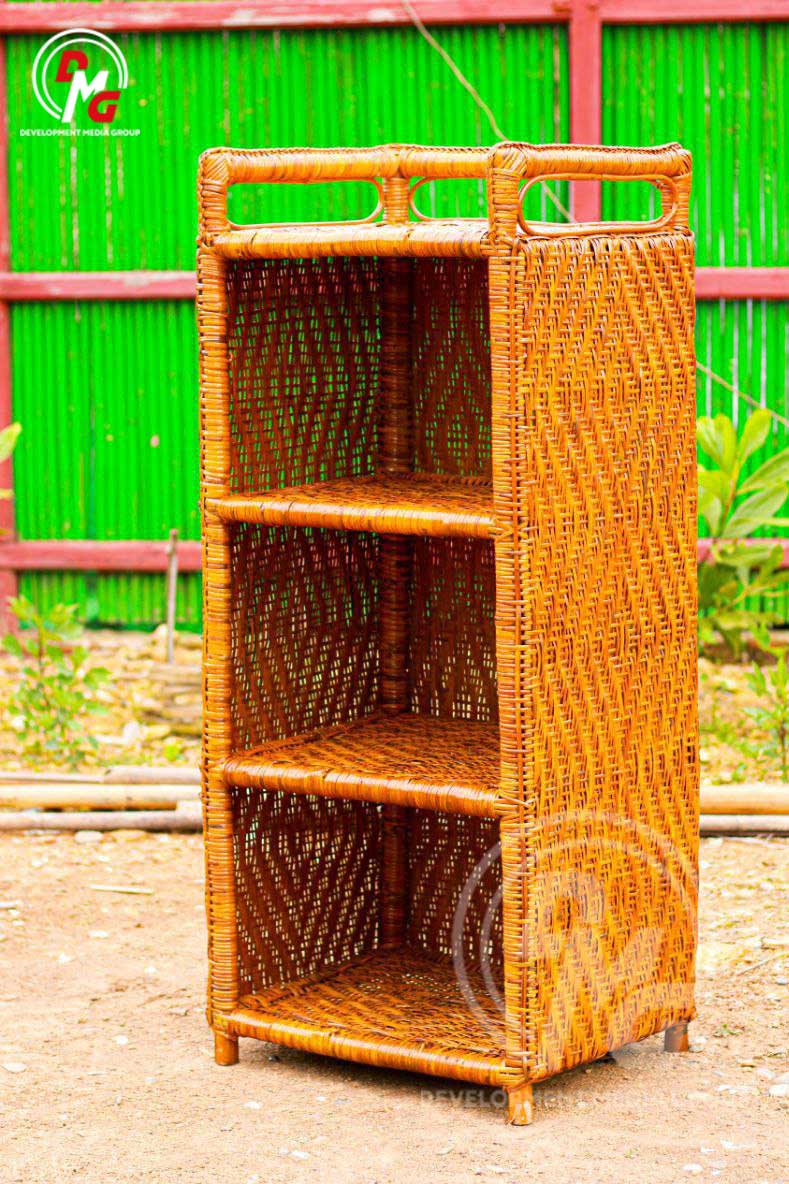- Junta unable to hold elections in dozens of wards and village-tracts in Sittwe, Kyaukphyu
- Fighting escalates between Myanmar military, Arakan Army in Ayeyarwady Region
- Regime steps up civilian arrests in Sittwe
- ULA safeguards Mrauk-U's ancient heritage
- Arakan on the Edge: What the DMG Landmine Impact Report Reveals About Myanmar's Deepening Humanitarian Crisis
Arakan State’s rattan industry no match for onslaught of preferred plasticware
The rattan industry in Arakan State is on the verge of collapse as rattan-ware is being replaced by plasticware, according to rattan furniture producers.
17 Aug 2023

DMG Newsroom
17 August 2023, Sittwe
The rattan industry in Arakan State is on the verge of collapse as rattan-ware is being replaced by plasticware, according to rattan furniture producers.
There was once high demand for furniture made with rattan from Maungdaw, Buthidaung, Mrauk-U, Minbya, Myebon and Ann townships, and rattan products were once among export items to Bangladesh, but the industry is struggling to survive as plasticware has become increasingly popular.
“Most rattan furniture producers only operated on a small-scale basis, and did not expand their production. Those businesses are gradually dying out,” said the manager of the Mrauk-U-based Mya Tazaung Foundation, which produces rattan furniture.

The foundation sells decorated rattan furniture at prices between 11,000 kyats to 220,000 kyats in Arakan State. But demand is low.
Rattan chairs are as durable as plastic chairs, and are better for hot season and more convenient for elderly persons, rattan-ware producers insist. Rattan chairs are, however, almost always more expense than their plastic counterparts, which can sell for 5,000 kyats or less.
Rattan furniture in Maungdaw and Buthidaung townships shut down their businesses nearly a decade ago due to scarcity of rattan resulting from excessive logging.
“In Maungdaw, people are no longer producing rattan-ware. Rattan is not abundant now. In the past, we exported a large volume of rattan products to Bangladesh,” said Maungdaw resident U Sein Hla Phyu.
Many of those who cut and sell rattan for their livelihoods have also switched to include bamboo, because of low demand for rattan.
“Previously, we made a living by cutting rattan. We now cut bamboo because there is little demand for rattan now,” said Chin ethnic man Ko Naing Min Htwe from Darlet Anauk village in Ann Township.
Rattan mainly grows in Kachin and Arakan states, and Sagaing and Tanintharyi regions.






-1.jpg)










